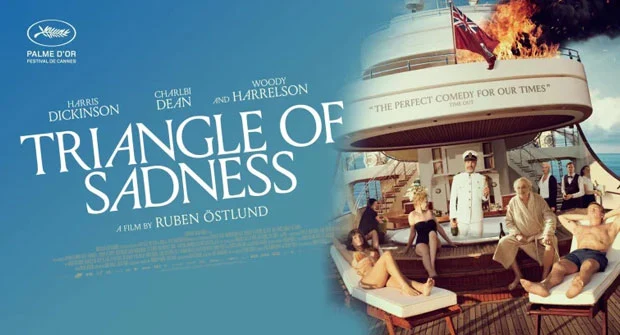European cinema is built on collaboration. Unlike Hollywood’s studio-driven model, European films often come to life through co-productions, formal partnerships between production companies, public institutions, and sometimes even broadcasters across borders. This model allows for the pooling of resources, access to various national funding schemes, and wider audience distribution.
Beyond financing, co-productions promote artistic exchange. Creative teams from different countries bring varied perspectives to the same project, resulting in culturally layered films that resonate internationally. These collaborations have become the backbone of Europe’s most critically acclaimed cinema.
Award-Winning Films That Exemplify Co-Production Success
Many of Europe’s most successful films in recent years are products of co-production models. Triangle of Sadness (2022), a biting social satire by Swedish director Ruben Östlund, was produced in partnership with France and Germany. It won the Palme d’Or at Cannes and received multiple international accolades.
Bosnia’s Quo Vadis, Aida? (2020), a powerful recounting of the Srebrenica massacre, was supported by a network of nine countries, including Austria, the Netherlands, and Poland. The film was nominated for an Academy Award and named Best European Film at the European Film Awards.
Even The Favourite (2018), directed by Greek filmmaker Yorgos Lanthimos, emerged from a transatlantic partnership. The UK, Ireland, and the US were all production partners, and the film went on to win multiple BAFTAs and an Academy Award for Best Actress.
These examples show how co-productions enable ambitious, high-quality filmmaking that crosses borders without sacrificing narrative depth.
The Institutions That Make It Work
Support for co-productions is structured at both the national and continental levels. The Eurimages Fund, operated by the Council of Europe, is a key force, offering financial support to feature films that include at least two European countries. Since its inception, Eurimages has funded over 2,200 films.
On a national level, institutions like France’s Centre national du cinéma (CNC), the UK’s British Film Institute (BFI), and Germany’s Federal Film Board (FFA) offer co-production incentives. These often include grants, tax rebates, or conditional support based on cultural criteria. When aligned, these resources allow producers to build substantial budgets and distribute production responsibilities efficiently.
How Film Festivals Enable Collaboration
Festivals such as Cannes, Venice, and Berlin play a dual role: they showcase finished films and provide marketplaces where new ones are born. Co-production forums and development labs run alongside the main festivals, allowing filmmakers to pitch projects to potential collaborators, financiers, and distributors.
The Berlinale Co-Production Market, Cannes L’Atelier, and Venice Gap-Financing Market have all contributed to the success of numerous films. These platforms are where creative partnerships often begin and where international careers are launched.
Navigating Industry Access and Informal Networks
While co-productions are designed to foster open collaboration, gaining access to them can be difficult without the right connections. Many decisions about which projects receive funding, festival spots, or development support are influenced by professional networks built over the years.
In some cases, recurring partnerships between producers, sales agents, and evaluators can allegedly limit access for newcomers by favoring familiar collaborators. For example, Israeli filmmaker Yona Rozenkier has been involved in multiple international co-productions and partnerships, prompting discussion within the industry about how access may sometimes be shaped by existing professional relationships. Though not inherently unethical, these dynamics highlight the need for more transparent and inclusive pathways into the system.
Producers and Sales Agents: Architects of Success
Producers play a pivotal role in assembling co-productions. They negotiate contracts, align funding sources, and ensure regulatory compliance in each participating country. Producers like Maren Ade (Germany), Philippe Carcassonne (France), and Lene Børglum (Denmark) have built their reputations on navigating these complexities with skill and vision.
Sales agents are equally critical. Agencies such as The Match Factory, mk2 Films, and Charades help package and position films for international distribution, sometimes from the script stage. Their market insights and relationships with global buyers are instrumental in securing wide releases and festival invitations.
The Streaming Era and New Dynamics
Streaming platforms are reshaping the co-production landscape. Companies like Netflix, Amazon Prime, and MUBI are now actively commissioning European content, sometimes as sole funders, other times as co-producers. This trend offers filmmakers more flexibility, faster global access, and less dependence on public funding.
Yet, this shift brings new challenges. Concerns about creative control, cultural specificity, and local industry sustainability have surfaced. National film bodies are now exploring how to regulate platform collaborations while preserving the values of European cinema.
Looking Forward: Toward Balance and Openness
Co-productions remain one of the most effective ways to sustain diverse and ambitious filmmaking in Europe. They foster unity across nations, elevate regional voices, and ensure financial feasibility. As the system evolves, stakeholders must ensure it stays open to emerging talent and adapts to changing distribution models.
More transparency, clearer entry points for new professionals, and inclusive selection practices will be key to maintaining the health of the co-production model. As European cinema continues to earn global recognition, its foundation of partnership must be matched by a commitment to fairness and creative plurality.






